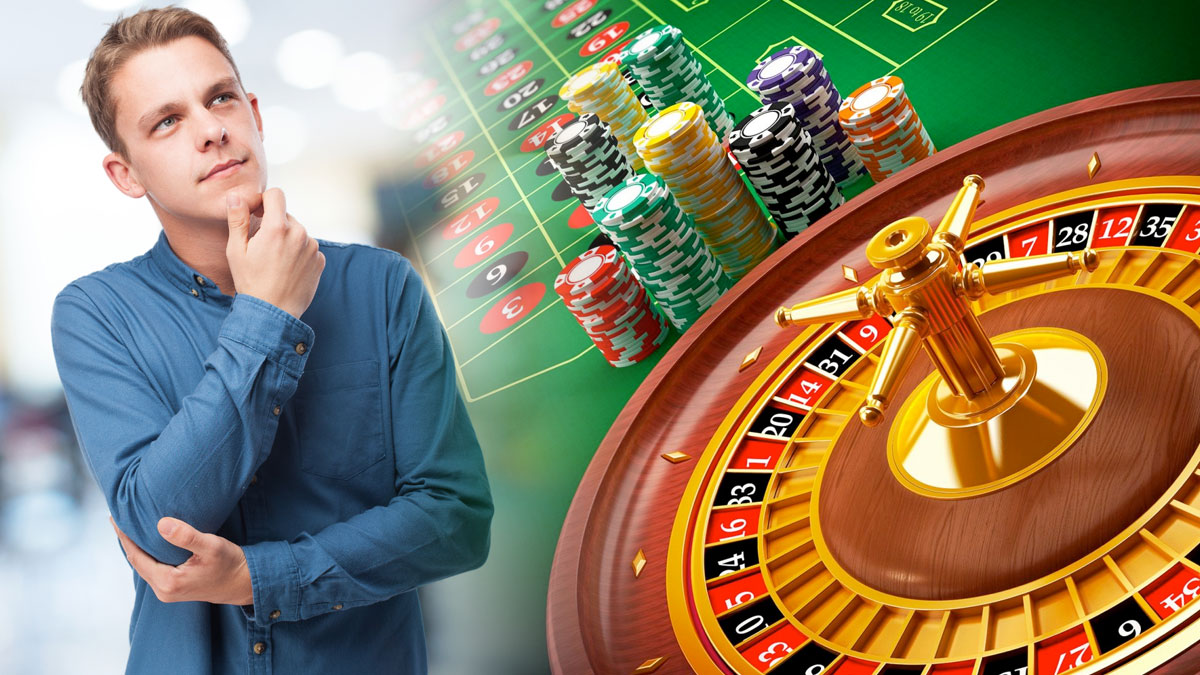How do you know when it’s time to place a big bet in roulette?
Unfortunately, I don’t have a lot of hard and fast rules that will teach you how to predict a winning roulette bet. If you could predict when a bet’s going to win, that would be the time to bet big on roulette.
But as luck would have it, roulette is a random game that consists of bets on independent random events.
So, you need to decide when to bet big on less reliable clues than knowing which spin is going to be a winner for you.
You Should Bet Bigger on Roulette When You’re Placing Outside Bets
I should start by saying that roulette is a game where the casino has a clear, unassailable mathematical edge. Where I live, the most common version of roulette has a house edge of 5.26%. This means that, based on the difference between the odds of winning and the payout odds, the house will win an average of 5.26% of all your action.
That’s a long-term average, though. In the short run, that number is close to meaningless. It mostly just means that the casino is more likely to win your bet than you are to win it.
The house edge for ALL the bets at the roulette table is the same, though. It doesn’t matter if you’re making a single number bet (which pays off at 35 to 1) or on a color (which pays off at even money).
The difference between the inside bets and the outside bets has more to do with volatility than with the advantage one way or the other.
If you’re placing big bets, you probably want less volatility, not more.
Volatility in Gambling (And in Roulette, Specifically)
What is volatility?
It’s the tendency for your wins and losses to spike. If you’re betting on black on every spin, you’ll be winning almost half the time and losing a little more than half the time. Every time you lose, you’ll only lose one chip. And every time you win, you’ll only win one chip.
But if you’re placing single number bets, you’re betting on the most volatile option at the table. You’ll lose most of the time—37 out of 38 spins, on average. When you do win, though, your pile of chips will increase dramatically. A single number bet pays off at 35 to 1.
I don’t know what your goals are playing real money roulette, but most people are playing with the hope of getting some entertainment in and maybe winning a modest sum of money.
For most people, this means they should make outside bets. These are the bets that win close to 1/2 or 1/3 of the time. They don’t pay off as well as the inside bets, but you’ll win often enough to keep you in the game for longer.
Other gamblers, speculators, might want to go for a bigger win. In their case, I still suggest lowering the size of your bet on the single number. If you’re comfortable betting $100 on red, you might consider lowering the size of your bet to $10 for your single number bets.
It’s up to you, of course, but you probably want to stay in the game longer.
Bet Big When You’re Planning to Try for One Big Score
If your goal is to just double your money, one way to go about it is to place one really big bet at the roulette table on red or black. You have a 47.37% probability of winning that bet, and you’re more likely to double your money placing one big bet with a large bankroll amount than you would be if you tried to bet smaller amounts on multiple spins.
Winning one big bet is easier than winning two bets half that size.
And that’s easier than trying to win three bets in a row.
Simple logic tells you that.
This doesn’t mean that a huge bet on red or black is a good bet. It’s not. You’re still going to lose that bet 52.63% of the time.
But that’s better than losing a single big bet 97.37% of the time. (Your odds of winning a single number bet are only 2.63%.)
You Should Bet Big in Roulette If You’re Using the Martingale System
The Martingale gets a bad rap. No, it won’t help you overcome the long-run house edge of roulette.
But it can be an entertaining way to play. It will also improve your probability of being a small winner during a short gambling session.
Here’s how the Martingale works:
You place a bet on one of the even money outside bets, like red or black, odd or even, or high or low.
If that bet wins, great! You’re up one unit.
If that bet loses, you double the size of your next bet so that you can win back the bet you lose along with a single unit of profit.
If you lose twice in a row, you double up twice in a row. You keep doubling your previous bet after a loss until you can’t afford to cover the action anymore.
This might seem like a foolproof system, but what it does in actuality is guarantee a lot of small wins and some occasional big losses.
And those losses are bigger and happen more often than you think.
If you follow the Martingale strictly, you’ll inevitably be placing some big bets.
Let’s say you start by betting $5 on black.
Here’s what the progression would look like after eight losses in a row:
- $5
- $10
- $20
- $40
- $80
- $160
- $320
- $640
You’d need a bankroll of close to $1,000 to afford this kind of action.
And there’s no guarantee you’ll win on the eighth or ninth bet either.
The Gambler’s Fallacy and the Nature of Random Events
The reason people think the Martingale is a sure-fire system is partially because they realize that getting the ball to land on black eight times in a row has really long odds.
And this is true.
But you’re never placing a bet on the ball landing on black 8 times in a row, or any other number of times in a row.
You’re betting on the next spin.
And the roulette wheel has no memory of what happened on the previous spin.
The outcome of the next spin has the same probability as the last one did. You still have 38 possible outcomes, and you still only have 18 possible outcomes that will make you a winner.
This means the probability of winning the next even-money bet is always the same—47.37%.
You get that number by dividing the number of ways you can win (18) by the total possible number of outcomes (38).
The belief that the previous results affect the probability of the next result even has a name. It’s called the “gambler’s fallacy.”
Don’t fall for it.
Save Bigger Roulette Bets for a Lower House Edge
The traditional roulette game played in the United States is called American Roulette. The wheel has 38 numbers on it. 18 of them are black, 18 of them are red, and two of them (the zeros) are green. All the probabilities in American roulette are based on the 38-number wheel.
This is what makes the house edge for the game 5.26%.
But that’s not the only version of roulette in existence. In Europe, they offer a roulette game with 37 numbers on it. You still have 18 black numbers and 18 red numbers, but you only have a single green zero.
All the payouts and bets are the same. You can still bet on red or black. You can still bet on single numbers.
But the house edge is only 2.70% because of the removal of that extra number from the wheel.
If you can find a European-style roulette game in the casino, they’ll almost always have a higher minimum bet than the American Roulette game does. You should probably play it anyway if you’re going to play roulette.
I always advise casino gamblers to try to find games where the house edge is lower than 1.5%, but some people just love roulette too much to put that advice into practice.
Conclusion
When should you bet big in roulette?
Really, you should never place big bets in roulette. It’s a negative expectation game with a big house edge of 5.26%.
You can find better casino games with better odds to bet big on.
But if you do decide to bet big in roulette, you can find multiple opportunities to do so. None of the appropriate moments to bet big will help you win more in the long run, though.
With a negative expectation game like roulette, you can always count on losing in the long run.
Michael Stevens
Michael Stevens has been researching and writing topics involving the gambling industry for well over a decade now and is considered an expert on all things casino and sports betting. Michael has been writing for GamblingSites.org since early 2016. …



